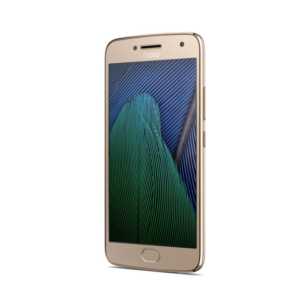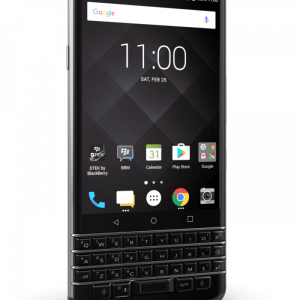Motorola Moto G5 Plus vs BlackBerry Keyone (Mercury)
At this year MWC 2017 in Barcelona, lot of devices got launched. Every OEM from Huawei to Nokia and Motorola to Samsung announced their devices. Even LG came with their flagship device LG G6 with Snapdragon 821. Sony announced its Xperia XZ Premium that too on Snapdragon 835. Motorola announced Moto G5 Plus and Blackberry announced its Blackberry KEYone. Today we are going to compare Motorola Moto G5 Plus vs BlackBerry KEYone.
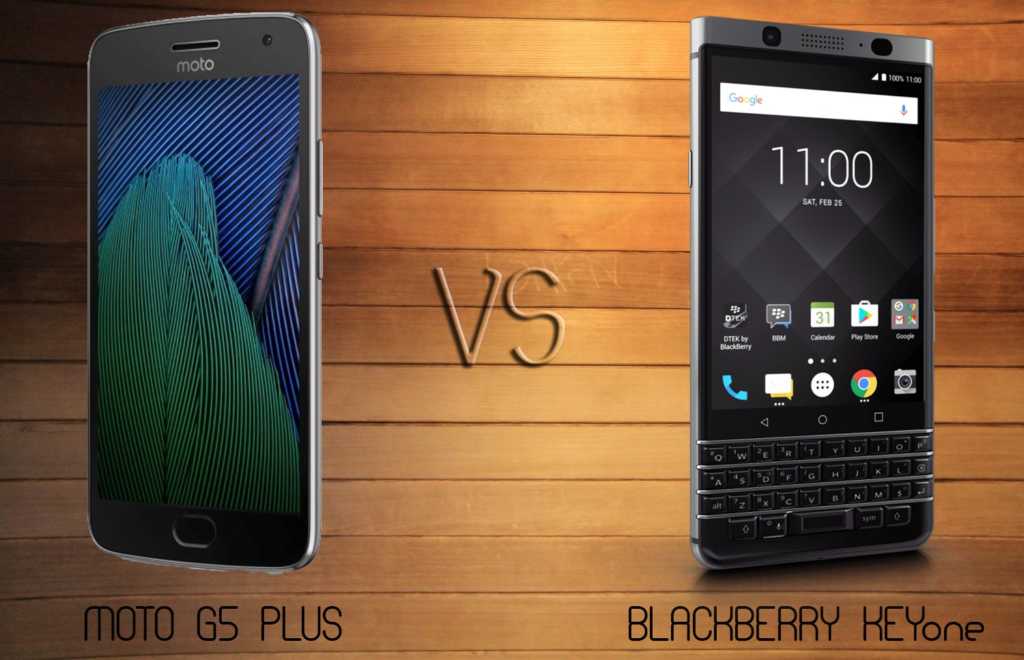
Motorola has come with the Moto G5 Plus with decent camera and Snapdragon 625. Well, Blackberry has come up with the same Snapdragon 625. THere’s also same camera on the rear side with little difference on the front.
Let’s see who wins the battle here:
Design:
It measures 150.2 x 74 x 7.7mm, weighs 155g. Here are little design changes if we compare it with its predecessor. Motorola has used micro USB instead of the increasingly common USB-C. Officially, it is not water resistant but holds capacity to sustain from occasional splash. Motorolas has even recessed fingerprint scanner. It’s certainly better-looking than the fingerprint reader on the Moto G4 Plus. The signature “M” also appears ton the rear and there is a nice curve to the back.
Motorola has given a circular shape at the bottom and top sides. There’s microphone on the bottom with speaker grill, microUSB and Audio port. Motorola has engraved the camera module on the back in a circular style which looks astonishing.
Taking a look at Blackberry then it has put in some more weight due to physical keyboard. Its dimensions are 149.3 x 72.5 x 9.4mm and weighs 180g. There’s a speaker grill along with camera, flash and sensors on the front side above the display. It has design similar to OnePlus 3 or 3T. Blackberry KEYone is little broader in comparison with Moto G5 Plus.
Blackberry has got USB -C type on bottom with speaker grills on both the sides. There’s a power button on the left side and on right side there’s a sim tray volume rocker. On the back there’s a camera with dual led flash. Blackberry KEYone has grippy surface then the metallic on the Moto G5 Plus.
Blackberry also holds Fingerprint sensor and NFC. While Moto G5 Plus only acks Fingerprint sensor.
Display:
Display of both the devices are good and give competition to each other.
Moto G5 Plus packs IPS LCD capacitive touchscreen 4.2 inch display with a resolution of 1080 x 1920 pixels at 424 ppi. Further on the Blackberry side, Display side stands at 4.5-inch due to physical keyboard. The resolution of KEYone stands at 1620 x 1080 with 433 ppi.
Moto G5 Plus display packs Corning Gorilla Glass 3 while KEYone has Corning Gorilla Glass 4. Both the devices have same display but Blackberry is little squarish.
Hardware:
Moto G5 Plus vs Blackberry KEYone can’t take place without talking about its hardware.
Blackberry KEYone is also powered by the Qualcomm Snapdragon 625 processor which is a mid-range chip by all means. There is also 3GB RAM, but then even cheap phones these days carry that amount of RAM, so there’s nothing new out here.
Even Moto G5 Plus packs same amount of ram and packs same processor with same clocking speed of 2.0 gHz.
Storage:
In Storage, BlackBerry KEYone offers 32GB of inbuilt storage that is expandable via microSD card (up to 2TB). It packs 3GB of RAM. While Moto G5 Plus have two size variants one with 2GB/32GB option other with 4GB/64GB storage option. You can expand it upto 256GB.
So, here also, there’s an option in Moto G5 Plus if you want more space and more RAM. While Blackberry has only single variant. Both the devices packs same storage technology.
Camera:
BlackBerry KEYone bears a 12-megapixel rear camera with a Sony IMX378 sensor – the same acclaimed sensor as the one on the Google Pixel – that has 1.55-micron pixels. Moto G5 Plus offers a 12-megapixel Dual Autofocus Pixels snapper on the rear, featuring an aperture of f/1.7 and 1.4µm pixels. If, Blackberry matches the Google Pixel’s then Moto G5 Plus packs Galaxy S7’s camera module.
On the backside there’s 5MP wide angle lens with aperture of f/2.2. Blackberry KEYone has 8-megapixel front facing camera with a wide-angle lens and a flash module.
Both the devices Moto G5 Plus and Blackberry KEYone doesn’t have optical image stabilisation it won’t be a low-light genius, but could well set new standards at the price.
Battery:
As required by the today’s time, Device’s battery is a buying factor for most of the users. In the battle of Moto G5 Plus vs Blackberry KEYone this is also an important aspect.
Blackberry KEYone holds a 3505 mAh battery that’s said to give all-day battery life and support Quick Charge 3.0. The QC 3.0 charges up the Moto upto 50% in just 36 minutes.
Moto G5 Plus has also used similar kind of technology on its 3000 mAh. They claim that TurboPower will charge up the device for 6 hours in just 15 minutes.
Sensors and Connectivity:
In connectivity, Moto G5 Plus v4.2 Bluetooth, MicroUSB, 3.5 mm jack. It packs Fingerprint (front-mounted), accelerometer, gyro, proximity and Magnetometer. It also has GPS and Radio. While, Blackberry holds v4.2 Bluetooth, USB -c , 3.5 mm jack. There’s Fingerprint (front-mounted), accelerometer, gyro, proximity and compass.
Pricing:
Blackberry KEYOne is available for $449 in the US, €599 in Europe and £499 in the UK. It is also coming to india for around Rs. 35000.
Moto G5 will be available starting in March for €199 with 2GB RAM/16GB storage across Europe and Latin America, while the Moto G5 Plus will go for $229 US for the 2GB/32GB model, and $279 for the 4GB/64GB version. In India Moto G5 coming in the month of march for the estimated price of INR 11,999 and Moto G Plus to stand out for INR 14,999.
Conclusion:
As we got to know that both the devices have little differences. Like, Blackberry packs NFC and comes only in 32 GB variant with 3 GB of RAM. There’s a additional pro about the KEYone i.e the physical keyboard and squarish display. It is little different from the the other devices.
While Moto G Plus gives choice to the users to opt for 2GB/32GB option or 4GB/64 GB option. If you looking for device with nicer specs and great support go for Moto G Plus.
If you are willing to pay more bucks for the physical keyboard of the Blackberry. Then you should opt for the Blackberry KEYone. If not, then try shifting your mind for Moto G Plus.
This is all from Moto G5 Plus vs Blackberry KEYone comparison.
Stay Connected we are coming with more comparisons!!
Check the specs Moto G5 Plus vs Blackberry KEYone comparison below:
-
Product Name
-
Product Image
-
Price
-
Our Rating
-
Brand
-
Category
Network
Design
-
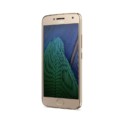
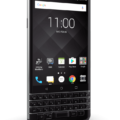
-
Type Design Type called form factor refers to a mobile phone's size, shape, and style as well as the layout and position of major components of phone. There are three major form factors seen in mobile phones => bar phones, folding phones and sliding phones.Bar Bar
-
Dimensions150.2 x 74 x 7.9 mm (5.91 x 2.91 x 0.31 in) 149.3 x 72.5 x 9.4mm
-
Weight155 g (5.47 oz) 180g
-
ColorsLunar Grey, Fine Gold
Display
-


-
Display Type Display Technology => A number of display technologies and types used in mobile phones => TFT (Thin Film Transistor), IPS (In-Place Switching), OLED (Organic Light Emitting Diode), AMOLED (Active-Matrix Organic Light-Emitting Diode), Super AMOLED (an even advanced version of AMOLED), Resistive Touchscreen (Resistive touchscreens contain two layer of conductive material with a very small gap between them which acts as a resistance), Capacitive Touchsceen (Capacitive touchscreen technology consists of a layer of glass coated with a transparent conductor)IPS LCD capacitive touchscreen 4.5-inch IPS LCD
-
Size5.2 inches 4.5-inch
-
Resolution1080 x 1920 pixels 1620 x 1080
-
Display Colors Display Colors is refers to the number of different shades of colors that the screen is capable of displaying => 64K colors, 256K colors and 16 million colors, Obviously 16M is highest available range of colors and better than others.16M colors 16M
-
Pixel Density Pixel Density (PPI) is refers to the concentration of pixels on a particular display, measured in pixels per inch (ppi). Pixel density is calculated by dividing the diagonal pixel resolution of a display by its diagonal size, higher pixel density better display quality.424 ppi 433 ppi
-
Touch ScreenMultitouch Yes, Multitouch
-
Display Protection Display Protection => Gorilla Glass is a special alkali-aluminosilicate glass shield with exceptional damage resistance that helps protect mobile displays from scratches, drops, and bumps of everyday use, It is always better to go for a smartphone with Gorilla Glass for that added protection and peace of mind.Corning Gorilla Glass 3
-
FeaturesSMS(threaded view), MMS, Email, Push Email, IM
Browser HTML5
Java No
- Fast battery charging
- MP3/AAC+/WAV/Flac player
- MP4/H.264 player
- Photo/video editor
- Document viewer
Software
-


-
Operating System OS => Every computer system run on a base software called Operating System (OS). Operating System controls all basic operations of the computer (such as smartphone, PDAs, tablet computers and other handheld devices). The Operating System allows the user to install and run third party applications (apps), apps are used to add new functionality to the device.Android OS, v7.0 (Nougat) Android 7.1 Nougat
Hardware
-


-
Chipset Chipset is a group of integrated circuits designed to perform one or a more dedicated functions, often with real time computing constraints, Popular smartphones are equipped with more advanced embedded chipsets that can do many different tasks depending on their programming.Qualcomm MSM8953 Snapdragon 625 Qualcomm Snapdragon 625
-
CPU CPU (Central Processing Unit) mostly known as processors, CPU processes instructions in order to carry out certain functions that make your device operate properly. Processors are often described as the brain of computers, smartphones and tablets, Smartphones and tablets rely on processors to carry out their every task, Processors are an incredibly important factor in selecting any type of computing device, including your smartphone.Octa-core 2.0 GHz Cortex-A53 2.0 GHz Octa Core
-
GPU GPU (Graphics Processing Unit) is a single-chip processor designed to rapidly manipulate and alter memory to accelerate the creation of images in a frame buffer intended for output to a display, This includes things such as lighting effects, object transformations, and 3D motion.Adreno 506 64-bit Adreno 506
-
RAM (Memory) RAM (Random Access Memory) is a type of computer memory that can be accessed randomly, any byte of memory can be accessed without touching the preceding bytes that allows information to be stored and accessed quickly from random locations. RAM is the most common type of memory found in computer systems, smartphones, tablets and other electronic devices.2 GB/4GB RAM 3GB
-
Internal Storage Internal Storage is a data storage space (flash memory) mostly used in smartphones, tablets and other electronic devices where operating system, apps, music, photos, videos, files and other user data Is stored.64 GB 32 GB
-
Card Slot Memory Card Slot is a special slot for inserting a memory card. Memory cards allow you to expand the phone's built-in memory, A memory card (sometimes called a flash memory card or a storage card) is a small storage medium used to store data such as text, pictures, audio, and video, for use on small, portable or remote computing devices such as mobile phones, mp3 players, digital cameras.up to 256 GB Yes, Via MicroSD upto 2TB
-
Sensors Sensors are electronic components that detects and responds to some type of input from the physical environment. The specific input could be light, heat, motion, moisture, pressure and location, The output is generally a signal that is converted to use in computing systems, a location sensor, such as a GPS receiver is able to detect current location of your electronic device.Fingerprint (front-mounted), accelerometer, gyro, proximity, compass Accelerometer, Magnetometer, Gyroscope, Proximity, Ambient Light, Hall Effect
Camera
-


-
Primary Camera is able to capture photographs and usually videos, The most important characteristics of a camera are the resolution (measured in megapixels), lens focus type (fixed or automatic), higher megapixel cameras are known to capture higher quality photos, but not always a good measurement of the photos quality.12 MP 12MP rear camera (Sony IMX378 sensor)
-
Video1080p@30fps, HDR 4k recording at 30 fps
-
Camera FeaturesGeo-tagging, touch focus, face detection, panorama, auto-HDR, autofocus, dual-LED (dual tone) flash
4x Digital zoom, continous &touch to focus, facedetection, electric image stablisation, Paorma, Burst, Live Filters Multi-Frame Low Light Enhancement
Battery
-


-
Battery Type Battery Type => Cell phones run on various kinds of batteries depending on the manufacturer, phone size or shape and features. There are basically four types of cell phone batteries => Lithium Polymer, Lithium Ion, Nickel Metal Hydride and Nickel Cadmium.Li-Ion (Lithium Ion) Li-Ion (Lithium Ion)
-
Capacity Battery Capacity is a measure (typically in Amp-hr) of the charge stored by the battery, and is determined by the mass of active material contained in the battery. The battery capacity represents the maximum amount of energy that can be extracted from the battery under certain conditions.3000 mAh 3505 mAh with quick charge 3.0
Connectivity
-


-
Bluetooth Bluetooth is a wireless communications technology for exchanging data between mobile phones, headsets, computers and other network devices over short distances without wires, Bluetooth technology was primarily designed to support simple wireless networking of personal consumer devices.v4.2, A2DP, LE v4.2 LE and EDR
-
Wi-fi Wi-Fi is a popular wireless networking technology using radio waves to provide high-speed network connections that allows devices to communicate without cords or cables, Wi-Fi is increasingly becoming the preferred mode of internet connectivity all over the world.Wi-Fi 802.11 a/b/g/n, dual-band, WiFi Direct, hotspot 802.11 b/g/n 2.4 GHz
-
Infrared Infrared connectivity is an old wireless technology used to connect two electronic devices. It uses a beam of infrared light to transmit information and so requires direct line of sight and operates only at close range.
-
USBmicroUSB v2.0, USB Host USB Type-C
-
GPS GPS The Global Positioning System is a satellite-based radio navigation system, GPS permits users to determine their position, velocity and the time 24 hours a day, in all weather, anywhere in the world, In order to locate your position, your device or GPS receiver must have a clear view of the sky.A-GPS, GLONASS, BDS Yes, GLONASS, BeiDou2
-
NFC NFC (Near field communication) is a set of standards for smartphones and similar devices to establish peer-to-peer radio communications with each other by touching them together or bringing them into proximity, usually no more than a few inches.
-
Headphone Jack

